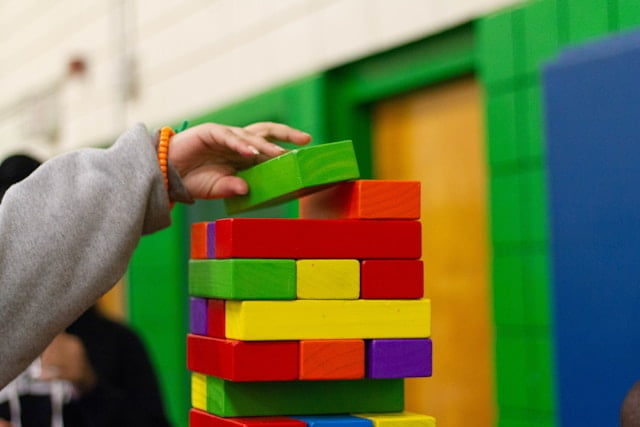Key Learning Points: Ken Blanchard’s ABCDs of trust says that trustworthy people are: Able, Believable, Connected and Dependable (ABCD). They also feel more personally included at work, make better leaders and build better relationships. These skills can be learned.
Blanchard’s ABCDs of Trust
Trust is a important for effective relationships and is essential for great leadership. It doesn’t come naturally but needs to be earned through trust-building actions and behaviors. Similarly, it can be easily lost through trust-breaking actions and behaviors.
In addition to being helpful for leading and building relationships, Blanchard calls out that individuals with low trust and individuals with high trust have very different personal experiences at work. Low trust individuals feel isolated, excluded, emotionally rejected and more alone than higher trust individuals.
Blanchard’s Four Components of Trust
Blanchard’s ABCDs of trust proposes that there are four key components that contribute towards how trustworthy someone is, and says that by focusing on these areas that individuals can become more trustworthy, build more effective relationships and become better leaders. Blanchard’s four building blocks of trust start with the letters ABCD. They are: Able, Believable, Connected and Dependable.

Able
The A in Blanchard’s ABCDs of trust stands for ability.
Ability is fundamentally about skills and knowledge. To be trustworthy about a specific subject, particularly in the world of work, an individual needs to be able to demonstrate understanding of the subject and capability to perform tasks associated with it. If they cannot demonstrate this, then there is no reason to trust their views or advice in relation to this subject.
Believable and Dependable
Believability is about honesty and integrity and dependability is about doing what you’ve said you’ll do.
To be trustworthy in relation to commitments they have made, an individual needs to be honest in both word and action. They need to do the things they’ve said they’d do, when they said they’d do them and to the quality they committed to achieve. If their words are dishonest, or their actions don’t reflect their words, then there is no reason to trust them.
If we can’t trust someone, we won’t believe them when they say things and we don’t depend on them to do things.
Connected
Connection is about building human relations with others. To be trustworthy in relation to thoughts and feelings an individual needs to share their own emotions and acknowledge, and respect, the emotions of others. If they only operate at an unemotional, impersonal and transactional level, we find it hard to understand and predict their actions, which makes it hard to get to know and trust them.
The more connected we are with people, the more likely we are to share our vulnerability with them
Building and Breaking Trust
While the ABCD model is helpful as a framework for understanding the high level factors that can affect trustworthiness, it’s also worth considering some specific actions that affect trust. Below we’ve pulled together two simple lists as examples of actions that can help to build or which can break trust in relationships.

Overlap with Other Trust Models
There are several models of trust in existence in addition to Blanchard’s ABCDs of Trust. Most of them basically say the same thing, though perhaps through slightly different language. We’ve considered the models in an overview, but have also included a high level comparison here.

Learning More
Trust is a hugely important factor that affects our experiences in the world of work. There are several different models that can help us think about trust including the Trust Equation, BRAVING and the Five Dimensions of Trust in Sales. While these models differ, there are lots of similarities between different models of trust.
Trust is also an important component of many organizational cultures. Where trust is higher, people tend to have more psychological safety and fewer social threats. As a result employee experience is better, as is employee engagement, and employees are better at feedback. This is part of the reason so many team building activities focus on increasing trust.
Trust is also something that plays into our emotional intelligence. Understanding our emotions, and the emotions of others can help us build trust.
Our View
This framework lays out some building blocks of trust and helps explain how you can build trust.
While we think that building trust is a very important thing to do, we also think that the underlying intentions and purpose behind the desire to build trust are also very important.
In our view, building trust for your own self-interest actually undermines your believability and connectedness, thus also your trustworthiness. People are smart and observant and will lose trust in anyone they think is trying to manipulate them for personal gain. It might be worth looking at personality & character ethics to learn more.
Overall we think this model is fine and can be helpful, we just reiterate that intention is important.
How We Help Organizations
We provide leadership development programmes and consulting services to clients around the world to help them become high performing organizations that are great places to work. We receive great feedback, build meaningful and lasting relationships and provide reduced cost services where price is a barrier.
Learning more about who we are and what we do it easy: To hear from us, please join our mailing list. To ask about how we can help you or your organization, please contact us. To explore topics we care about, listen to our podcast. To attend a free seminar, please check out our eventbrite page.
We’re also considering creating a community for people interested in improving the world of work. If you’d like to be part of it, please contact us.
Sources and Feedback
This post on Blanchard’s ABCD’s of trust based on interpretations of work originally produced by Ken Blanchard. He has published much of his work in the book: “Trust Works!”.
We’re a small organization who know we make mistakes and want to improve them. Please contact us with any feedback you have on this post. We’ll usually reply within 72 hours.






